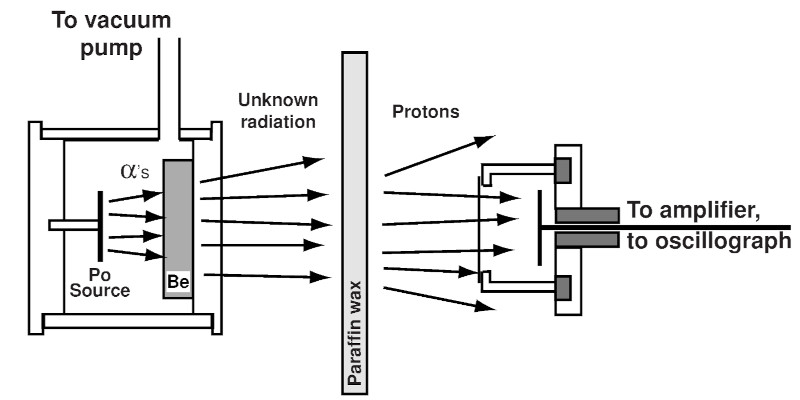
A schematic diagram of the experiment James Chadwick used to discover the neutron in 1932 — At left, a polonium source was used to irradiate beryllium with alpha particles, which induced a type of uncharged radiation initially thought to be gamma rays. When this radiation struck paraffin wax, protons were ejected with ca. 5.5 MeV kinetic energy. The protons were observed using a small ionization chamber, called a counter, that detected a signal recorded on an oscillograph. Adapted from J. Chadwick, The Existence of a Neutron, Proc. Royal Society London, Series A, 136, 692-708, 1932.
Photo Credit: By Bdushaw - Own work, CC BY-SA 4.0, https://commons.wikimedia.org/w/index.php?curid=63982002
